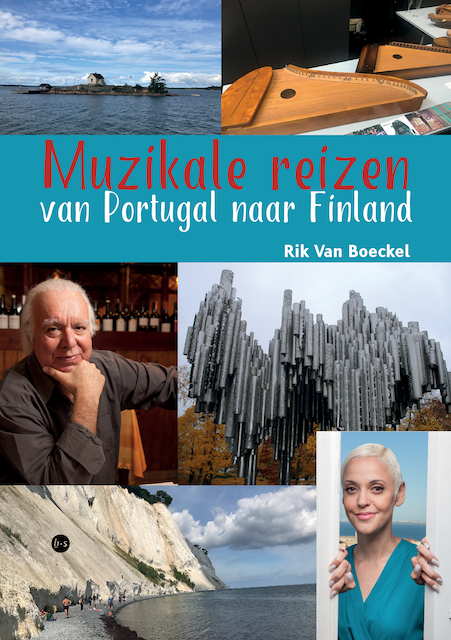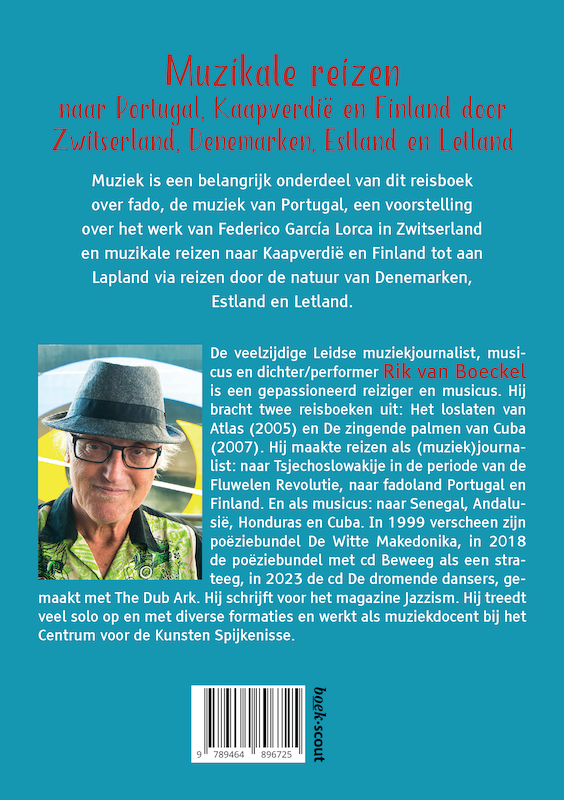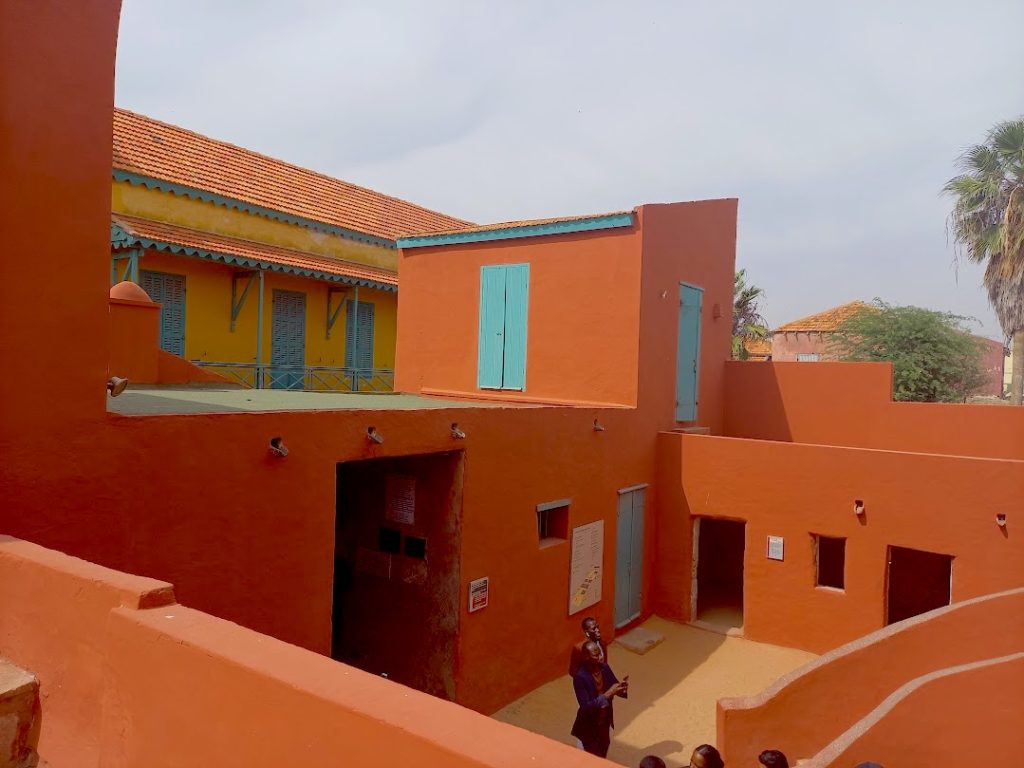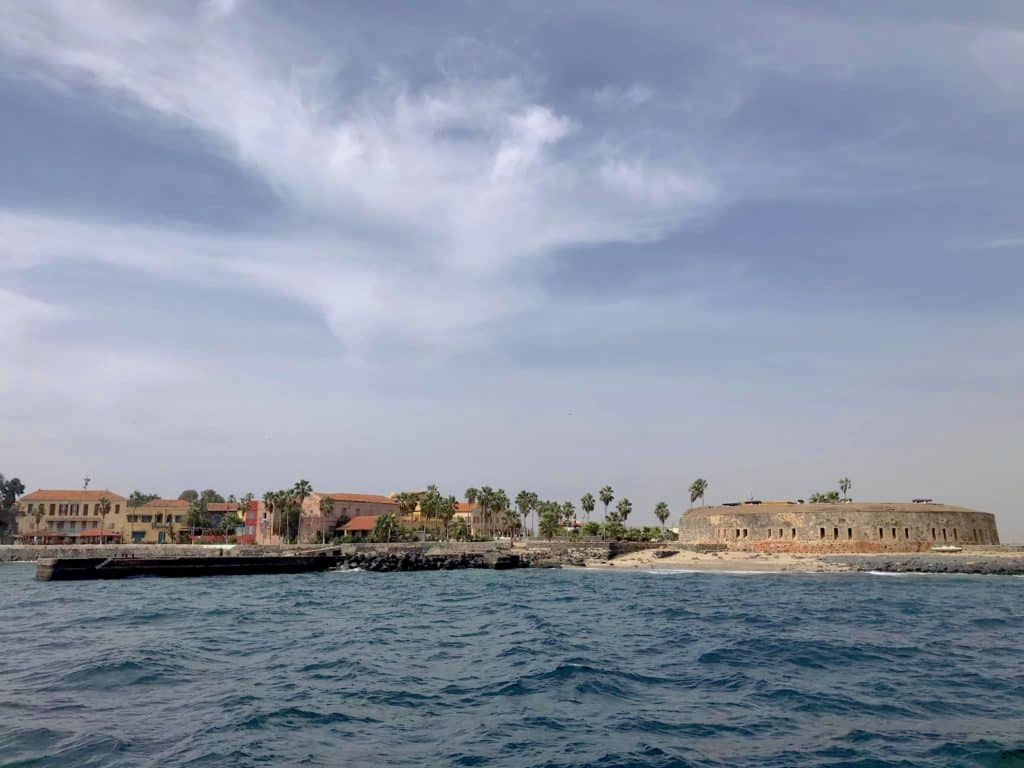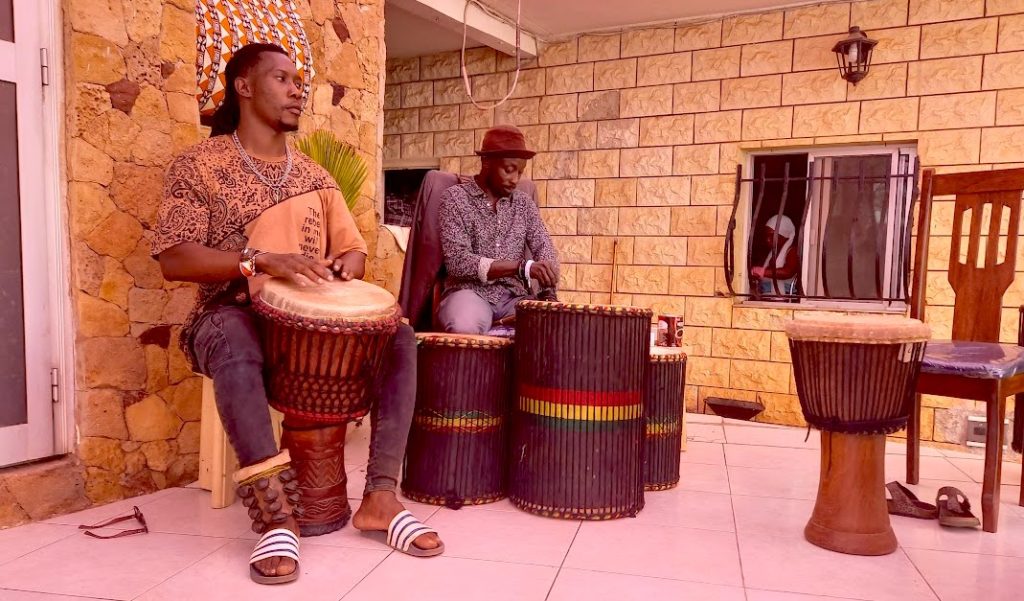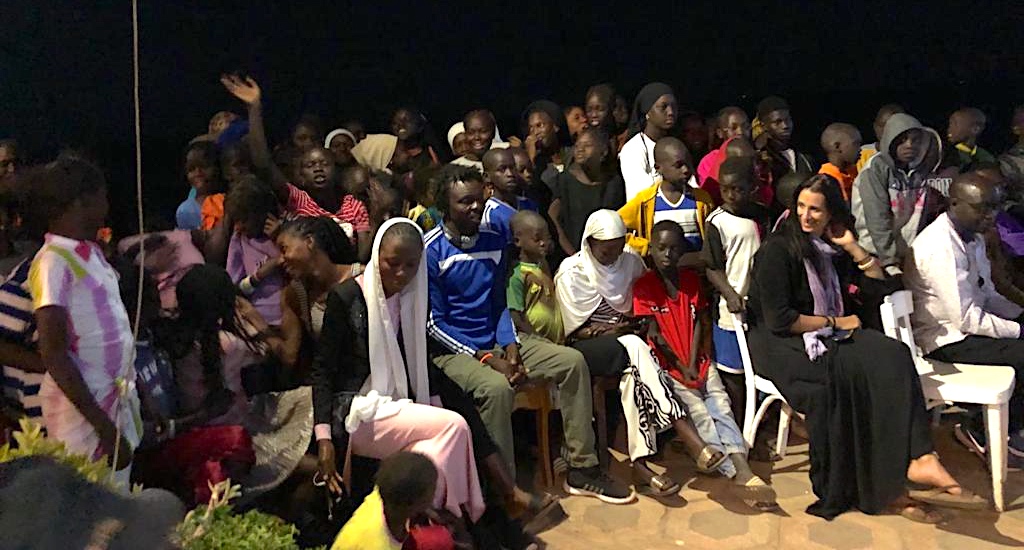In Senegal, daily life is inextricably linked to music. The country has many traditional instruments that characterize its culture and lifestyle. Journalist and musician Rik van Boeckel returned to the music-rich country thirty years after his first visit with the Senegalese percussionist and griot Moussé Dramé as his guide and immersed himself in its musical and cultural life.
Text & photography: Rik van Boeckel | Author: Angelique van Os
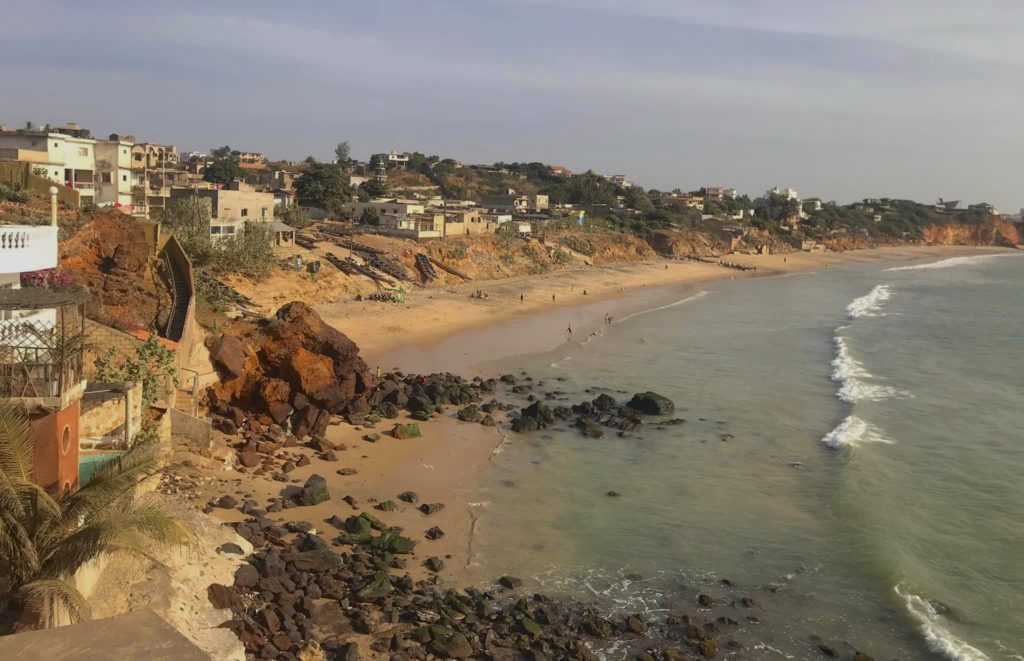
The first time I went to Senegal was in the late eighties. At that time I visited Senegal with my then percussion teacher, Aly N’Diaye Rose. We returned to Dakar, with 8 thousand people living in Senegal. I stayed there for a month. I saw Youssou N’Dour opted in Theater Sorano in interview with Baaba Maal, the same with blind singer/guitarist Mansour Seck traditional music from Toucouleur which is now the name of Senegal. “Traditional music is authentic, but its color is no longer lost”, and that is what it is all about. I learned a lot about the griots. These are troubadours who pass on age-old traditions from generation to generation orally and through music. Such traditions live on through drum rhythms and songs.
Cascamance, south of Senegal
I also visited the Casamance region in southern Senegal at the time. Casamance is located more than 450 kilometers from Dakar. Apart from villages with sod huts, this area has nothing in common with western Senegal. It is a green area with rivers where dolphins live, while the north is desert-like. Casamance is in the middle of its landscaping, where the rivers are exposed to the rivers. There are palm trees on islands and these rivers. In Ziguinchor, from the city of Casamance, you will hear the sound of your instrument. Later, Malinese’s singer Toumani Diabate interviewed Jazz Magazine, and his instrument was also sung and the songs were written Moussé Dramé, who now lives and works in Amsterdam.
Background Senegal
Music-rich Senegal is a country with almost 13 million inhabitants. Senegal is a republic in 1963 that is one of the most democratic countries in Africa. The current president is Macky Sall. The ‘official’ spoken and written language is French. Wolof is a most spoken language together with, among others, Peul, Djola, Bambara. Ninety-five percent or population is Muslim, five percent is Catholic in Protestant.
Senegal has various percussion instruments including djembe, sabar, doundoun, tama talking drum, seourouba in bougarabou, and prachtige melody-instruments including West-Afrikaans harp, 21-snarige kora and pentatonische balafoon. The best musician of Youssou N’Dour in the Baobab Orchestra.
The ethnic group in Senegal has its own dance, instruments and music. The Wolof people have their intense sabars, bouncy dances and shrill singing. Another population group, the Djola, express themselves with their seourouba and bougarabou rhythms and the Bambara people play the djembe, talking drum and doundoun. In natural Afrikaans, for example, the sabar.
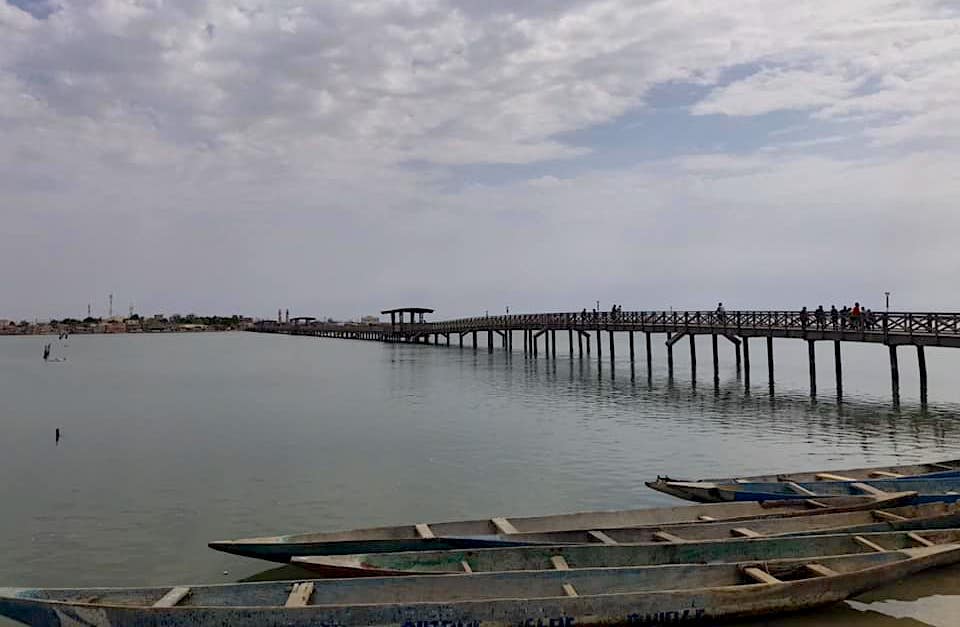
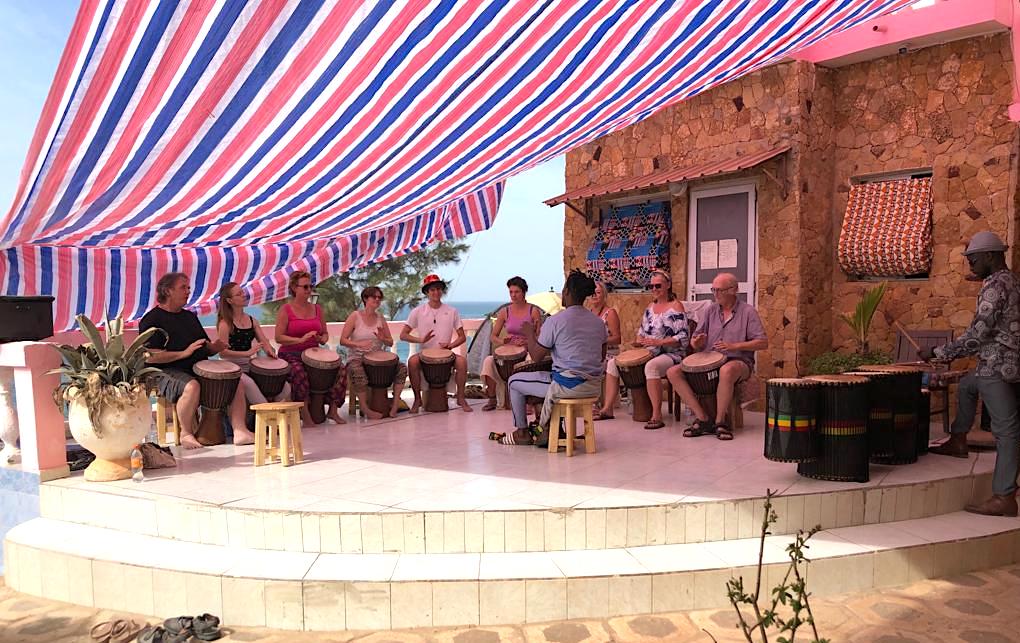
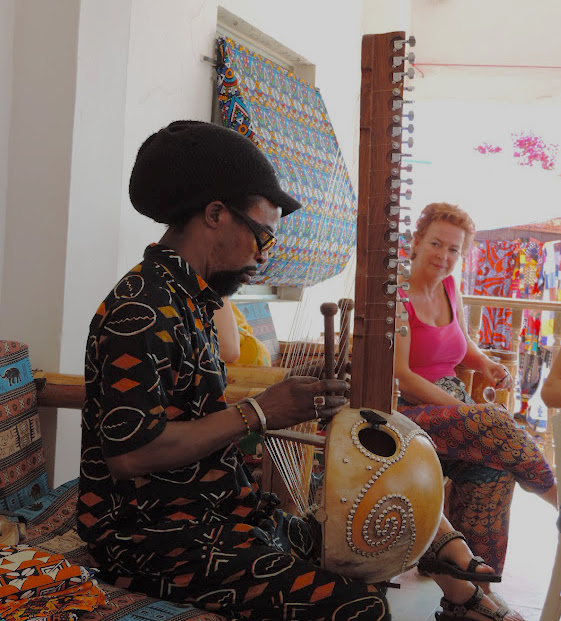
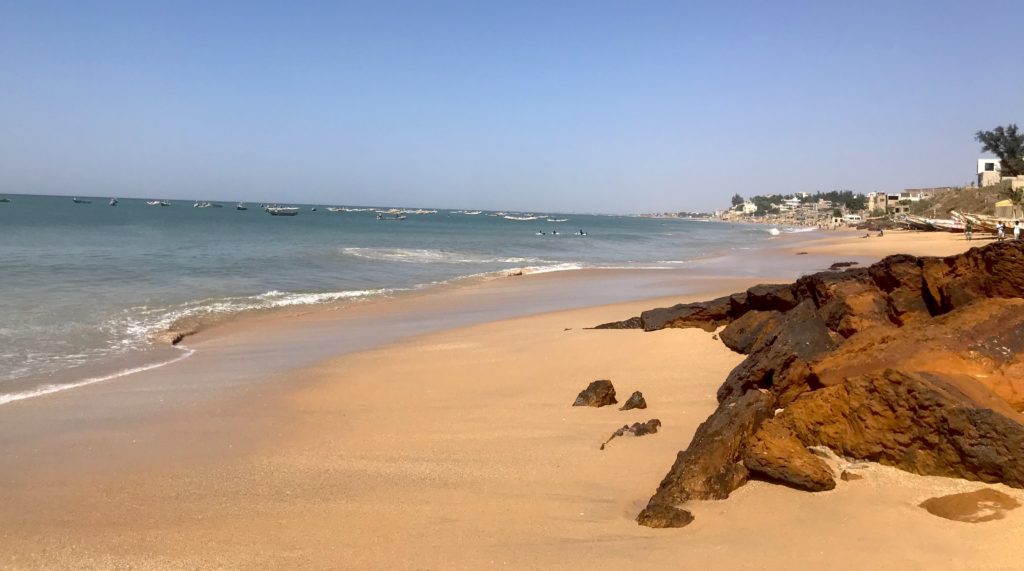
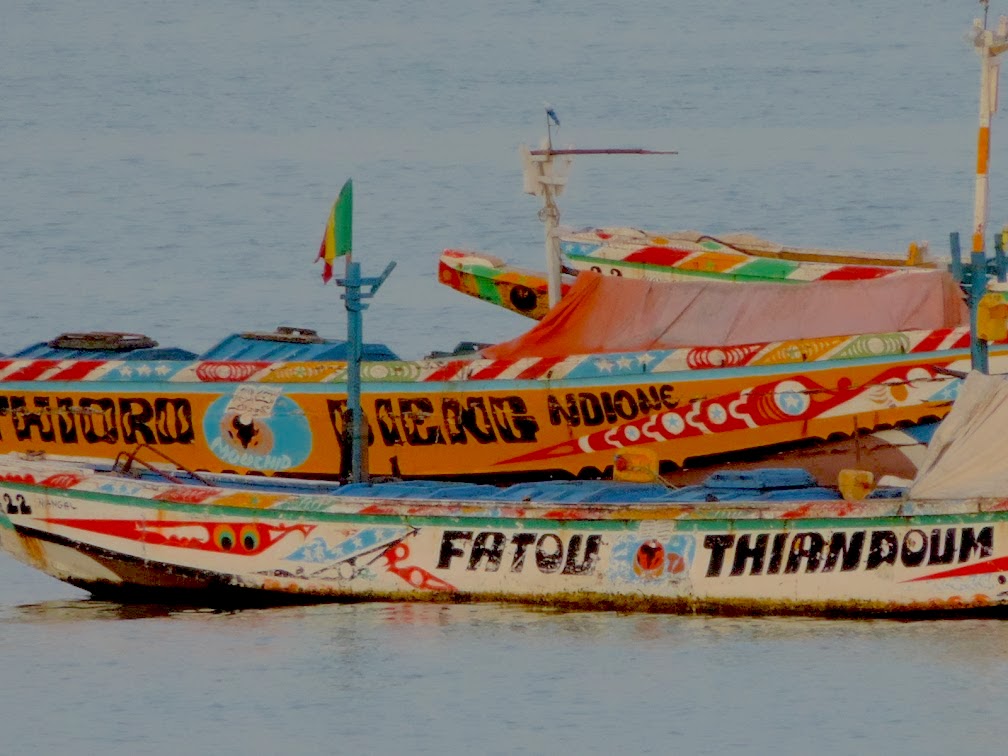
Djembe Dramé music trip
Now, thirty years later, I return to Senegal. This time I travel with a group of djembe and African dance students led by Moussé and his Dutch wife and dancer, Turid Dramé. They started in 1999 with Djembé Dramé and organized this music and culture trip to Senegal. Moussé teaches a lot and plays various West African instruments such as djembe, sabar (a Senegalese drum played with one hand and one twig), tama (a Senegalese talking drum) and kora and n’goni (a harp-like string instrument from Mali). . Turid gives African dance lessons.
Coastal village Yene Tode
We visit the coastal village of Yene Tode, which is located 40 km south of Dakar. The village is peaceful and friendly people live there. Yene Tode is within walking distance of the more touristy Toubab Diallo, where there are two music and dance schools and many cultural events are organised.
Happy children
I take beach walks from Yene Tode to Toubab Diallo. We also visit the nearby northern fishing village of Njangal under the guidance of Moussé Dramé. We walk along the foaming surf, which is strongly audible at night. We see fishermen going to their colorful and traditional piroque boats. As we stroll past the baobabs, children cheerfully approach us. They like to have their picture taken and are even willing to pose. It is impressive to see that they are so happy with our visit. They probably already know that we are there to get acquainted with the culture and music of Senegal. Because there have also been groups in recent years.
Baobab Orchestra
Many Baobabs grow in the Dakar area. The branches are sometimes so thick that you can walk on them. There is a Senegalese group that does not include the Baobab Orchestra. This group combines West African music with Afro-Cuban music. This music is based on the most recent styles of Congolese rumba and Creole melodies. It makes this music very special!
Rhythm patterns Senegal
During the various djembe workshops led by Moussé Dramé and in Senegal, percussionists Tarang Cissokho won new rhythms in Bilal. Here we get the chance to solo on that. This is not the case for you. Even though I have learned so many djembe rhythms with polyrhythmic patterns, I know that you never stop learning them. Because every West African country has different djembe rhythm patterns. So we have Moussé on and there is another verse of patrons with the rhythm Timini which means ‘welcome’. It is a four-quarter time.
Polyrhythm
And three patterns of the Mendjani rhythm which relates to the puberty. Said is a 12/8 rhythm with complicated patterns. The intention is to be able to play the four patterns side by side with both rhythms. This word is polyrhythmic and has been written for all West African rhymes. Each rhythm also has a call and a break and we learn those too. With both rhythms we also learn to sing.
Shell Island Fadiouth
By bus we don’t know what happens to me at the Joal center. We went from 800 meters to 800 meters above sea level where Fadiouth and Fadiouth were born in 1881. Fadiouth is a shell island where Christianity and Islam coexist peacefully, even in the cemetery! What is special about Fadiouth is that most of the inhabitants are Catholic. While in Senegal only five percent of the population is Catholic. The residents of Fadiouth live from catching shellfish.
It is very nice to walk through Fadiouth; Door of smallest roads puts the time, stone houses in different colors that are so different from those in the Netherlands. This calls for you to occasionally stop at a house and experience the local Senegalese atmosphere.
Salt Lake Lac Rose
Back in Yene Tode, Tarang Cissokho gives a small concert on the kora, accompanied by Bilal on the gourd. Later we were in Toubab Diallo getting to know children. It’s a lot of fun to see them dancing to djembe, sabar and doundoun rhythms.
We visit the Lac Rose salt lake by car, which is located north of Yene Tode. The lake is three meters deep, half of which consists of salt and the other half of water. We are sure that you can do it again and you will be able to drink it. Due to high concentration (300-480 g/l) swimmers float in the water, as in the Dead Sea. The population does salt mining at the lake, so that salt mountains can be seen. We buy table salt to use with our food.
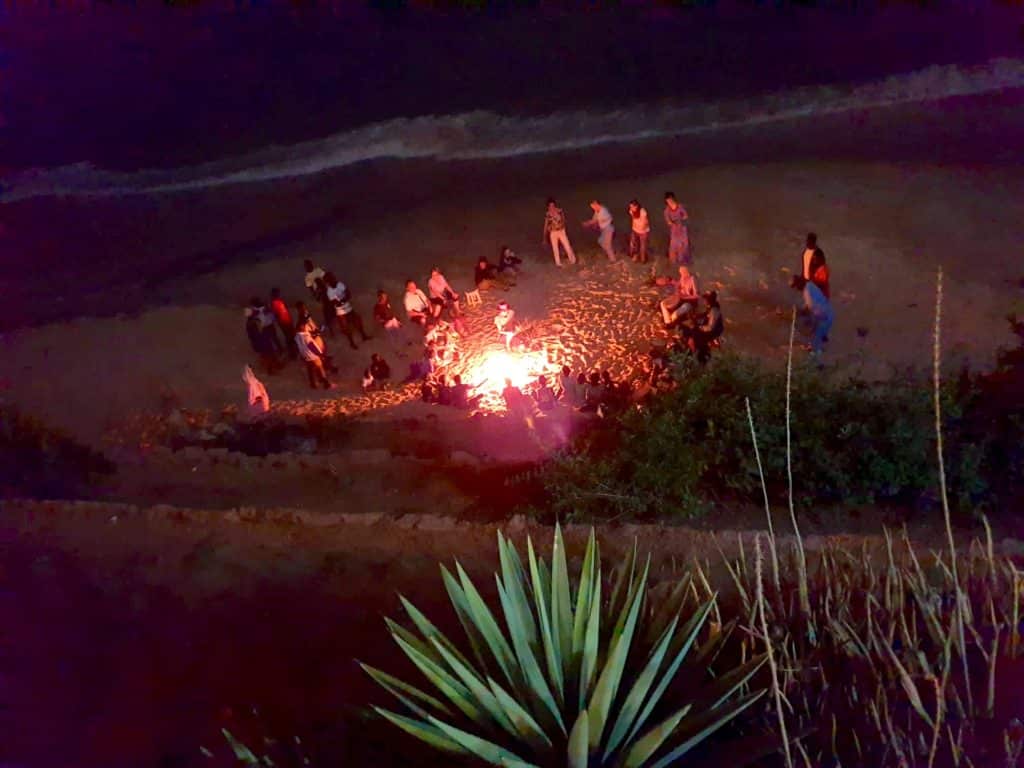
Rhythms from the Mandingue Empire
Different djembe rhythms are played in West African countries. Sometimes they are the same, but with different patterns. For example, Moussé teaches us rhythms from Mali and Bilal the Zaouli rhythm from Ivory Coast, while his own background is in Mauritania. This is because before colonial times there was one empire: the Mandingue empire. The French, English and Portuguese formed the later countries with their colonies. In interviews with West African musicians, I was told that the differences in rhythms are comparable to different languages or dialects. For example, I learned a Matoto rhythm from Guinea that is played differently in Mali.
Albinism in Senegal
The next special visit is the visit of albino Mohammed Bamba, who talks about albinism in Africa and Senegal. Albinism is a hereditary skin condition that is common in Africa. The skin, hair and eyes are lighter because the body does not produce enough of the dye melanin. Because albinos look different, they are often excluded and live in the shade. In some African countries, albinos are even mutilated and murdered by poachers. Some medicine men seem to regularly sell their body parts as medicines for a lot of money. It’s a big problem.
The Malian singer Salif Keita is a well-known albino. The Dutch Albinism in Africa Foundation (SAA) puts people with albinism in Africa back into society by helping them to
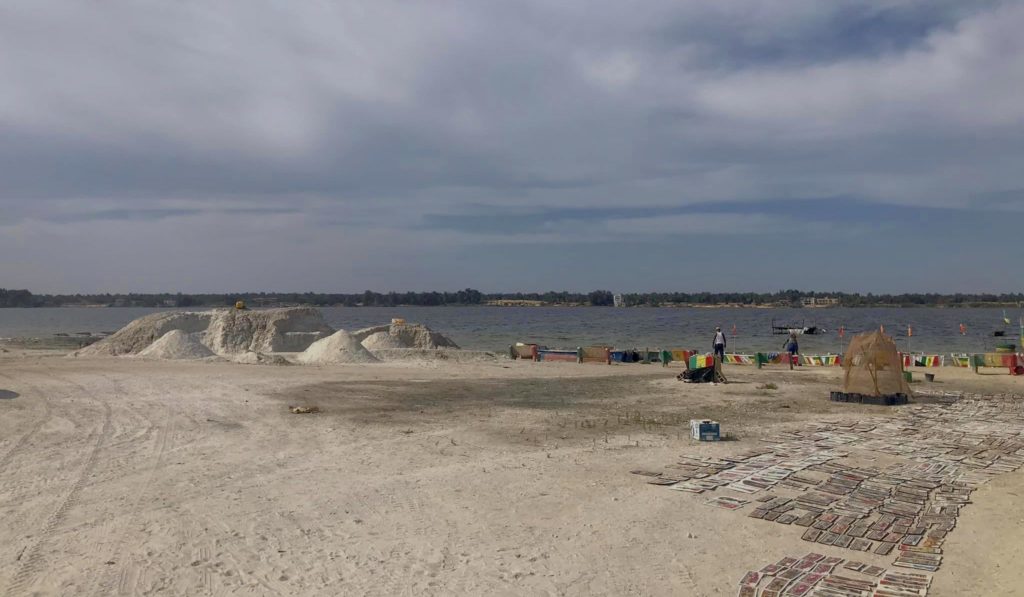
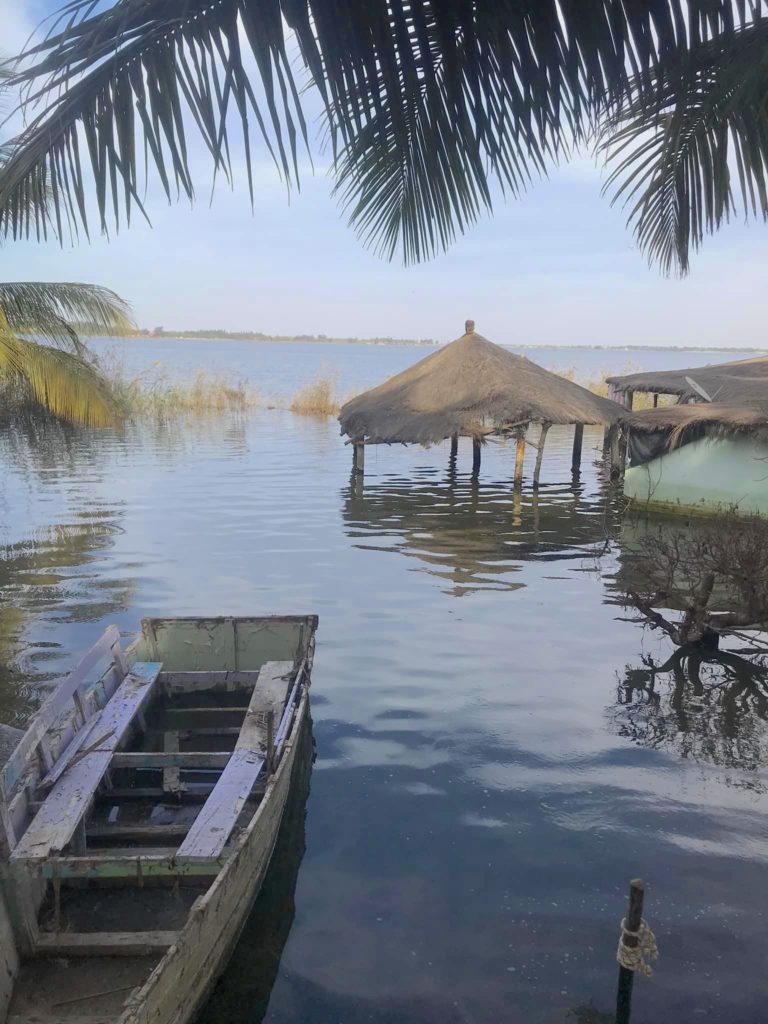
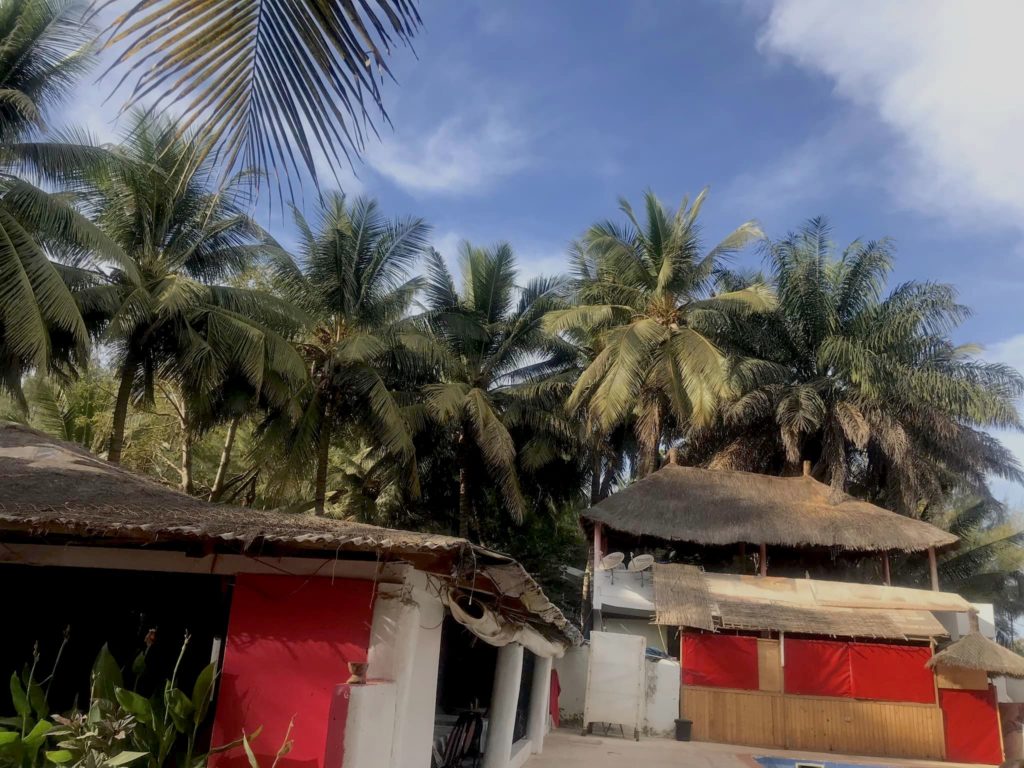
Island Goreé
At the end of the eighties I went to Gorée, an island off the coast of Dakar. Now I’m visiting it again with the group. Gorée is one of the most important memorials of the European slave trade in Africa. This island, where slaves used to be collected and traded by the Dutch, among others, is named after Goeree-Overflakkee. Ships from the Zeeland and Amsterdam companies used to sail together from the coast of Goeree. They anchored near Gorée Island. When the sailors looked at the island, they saw that the shape of the island was similar to that of Goeree and gave it the same name. When the island fell into French hands, the name was changed to Gorée. In 1978, UNESCO placed the island on the world list of monuments.
Slavery Senegal
Anyone who visits Gorée now enters a lot of history: beautifully colored colonial houses, lots of flowers and plants, a beach and nice swimming water. The car-free island is accessible by the ‘chaloupe’, the small boat that the children climb onto and dive from upon arrival. But also with a big boat. We travel by train from Bargny station to Dakar and then by large boat to the island. Upon arrival you can see a photo of Nelson Mandela, who once visited the island.
In the slavery museum, the terrible past becomes very clear through the explanation of a guide who tells how slaves who tried to flee or were killed by guards or while swimming in the sea fell prey to sharks. After this intense visit we eat at Siga, a Senegalese woman who serves us delicious food.
Back in Yene Tode, we play djembe on the beach. I sit in the middle of the Senegalese percussionists, while many local girls and boys start dancing to the learned rhythms. Some of them focus on me and start dancing in front of me, inviting me to solo. I think that’s a great experience. Then they dance with Senegalese djembe and doundoun players.
Concert for Senegalese village
After a dress rehearsal, we will give a concert on the last evening in Yene Tode for the Senegalese village audience with new djembe rhythms and dances learned during the trip. The audience visibly enjoys it. For us it is special to be able to solo in front of the enthusiastic audience that applauds loudly. I also go wild in a solo.
While playing, sometimes a Senegalese from the audience suddenly comes on stage to dance. This makes me think back to my first trip, at the end of the 1980s, when Senegalese men and women also started dancing to the rhythms played at the time. A timeless image, because dance and music are anchored in West African culture. It gives a very good feeling.
Modern Senegal
If you play djembe as a Westerner, it is recommended to go to West Africa to feel and understand how (djembe) music lives there. And this certainly also applies to Senegal, which has become more modern and has a better infrastructure compared to 30 years ago. During this second trip through Senegal I learned new rhythms again. And nothing is as beautiful as playing traditional music with and for locals in places where those sounds come most to life. ![]()
In Musical travels from Portugal to Finland Rik van Boeckel records his passion for travel and music. In various travel stories he looks back on interviews with artists, such as with Portuguese fado greats such as Celeste Rodrigues, Carlos do Carmo, Mariza, Cuca Roseta, Mario Pacheco, Ana Moura, Christina Branco and the emerging fado singer Sara Correia. The fado from the street and the fado cafés, where all fadistas start, are also discussed extensively.
The story GlobalLorca from Spain, Cuba and Buenos Aires to Switzerland describes a musical, theatrical poetic performance about Federico García Lorca to which Van Boeckel acts as musician and poet participated. During his musical journey through the Cape Verde islands, he notes how the spirit of Cesária Évora is strong there.
In addition to culture, Van Boeckel also writes about natural parks in Estonia and Latvia, combined with information about the Estonian musician Mari Kalkun. Poems have been added to each travel story.
The story about traditional Finnish instruments and their musicians, which was in our first magazine, is also in the book.
You can HEREread the story about Finland .
Publisher: Boekscout | Version: paperback | pages: 150 | Dutch | €20.50
